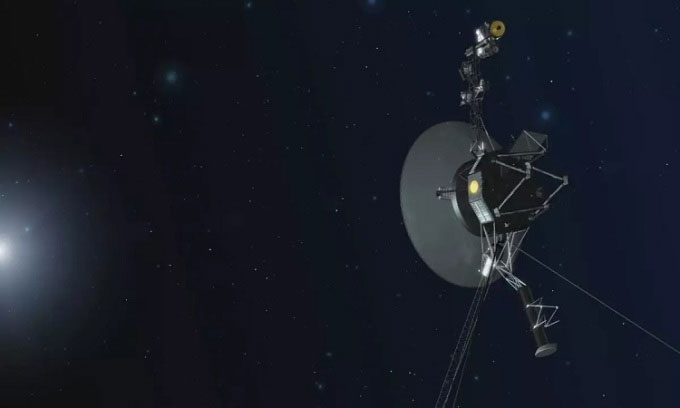After inadvertently tilting the antenna of the Voyager 2 spacecraft away from Earth, NASA will be unable to communicate with the interstellar probe at least until October 15.
NASA has temporarily lost contact with the Voyager 2 probe, the second most distant man-made object from Earth in space, which is currently traveling through interstellar space approximately 19.9 billion kilometers away. According to a statement from NASA’s Jet Propulsion Laboratory (JPL), scientists lost contact with the probe on July 21 after a series of commands caused Voyager 2 to tilt its antenna approximately 2 degrees away from Earth.

Voyager 2 has been drifting in interstellar space since November 2018. (Photo: NASA).
Unable to send or receive messages from NASA’s Deep Space Network (a collection of large radio antennas supporting many of NASA’s interplanetary missions), Voyager 2 is essentially drifting alone in the darkness of space after leaving the outer edge of the Solar System in November 2018.
According to NASA, the loss of radio signal is only temporary. Voyager 2 is programmed to adjust its antenna orientation several times a year to maintain communication with Earth as it drifts further away. The next adjustment is scheduled for October 15, when communication with Voyager 2 is expected to be restored.
The Voyager duo was launched in August and September 1977, 16 days apart, with Voyager 2 launching before Voyager 1. Both probes flew past the planets at the outer edge of the Solar System before crossing the farthest boundary of the heliosphere, the outermost layer of the Sun’s atmosphere that separates the solar system from interstellar space.
Voyager 1 entered interstellar space first, crossing the heliosphere in August 2012. As the most distant man-made object ever created, Voyager 1 is now about 23.8 billion kilometers from Earth. Communication with Voyager 1 remains uninterrupted.
Both Voyager spacecraft have enough power and fuel to continue operating until at least 2025, according to NASA. However, when the duo eventually loses contact with Earth permanently, their mission to the stars will continue. Each spacecraft carries a gold-plated copper disc known as the Voyager Golden Record, an audio postcard designed to share information about Earth with any extraterrestrial beings that may encounter the probe someday. Each record contains 27 musical tracks, 22 minutes of natural sounds, and spoken greetings in 59 languages. The probes also include a record player with visual instructions and a star map indicating the location of Earth.


















































